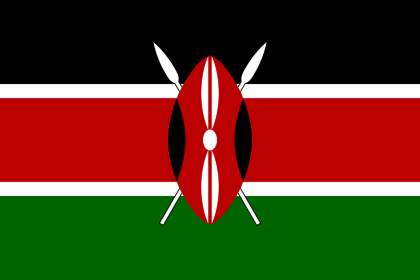Kenyan NGOs engaging ICT for development: a comparative study
This project component is grounded in Kenya and led by Associate Professor Norbert Wildermuth, Roskilde University, Department of Communication, Journalism and Information Technologies (Denmark).
The project will focus on participatory communication and digital empowerment strategies for democracy and good governance in East Africa. Three Nairobi-based NGOs/CSOs with an established community media platform and and ICT-based communicative dimension of advocacy will be studied over time:
- Slums Information Development and Resource Centers (SIDAREC)
- African Centre for Women, Information and Communications Technology (ACWICT)
- Kimathi Information Centre (KIC)
The project’s main objective is to qualify common conceptualisations of the relation of ICT4D and good governance based on the empirical evidence provided by the case studies. How do the examined non-profit NGOs integrate ICTs in the institutions’ strategic planning? Which opportunities and responsibilities result from the use of ICT? How do they situate themselves and participate in the public debate? How are they accountable to and rooted within the concerns articulated by ordinary citizens? How –if at all– do they to hold the government accountable on issues of key concern to their mission?
Three layers of analytical data will be considered:
- The significance of media and ICT in the everyday lives of the communities that SIDAREC, ACWICT and KIC are involved with will be studied through a communications needs analysis, based on questionnaires and in-depth, qualitative interviews with media ‘users’ from these communities. The analysis will draw on the methodology ‘information and communication audits’ developed by UNDP’s Oslo Governance Centre.
- Empirical findings will be analysed together with quantitative data provided e.g. by Steadman Research Services International-Kenya and the Communications Commission of Kenya (CCK).
- Interviews with media professionals, market/audience researchers, government and civil society representatives will provide a third layer of analytical data.
The selected people-centred communication initiatives encompass a civil society-driven advocacy dimension that seeks to further transparency in governance and dialogue with state agencies. Ideally, those initiatives not only play the role of non-profit community media that advance human development objectives, but also seek to give a voice to the communities involved.
The analytical dimensions of empirical research are: the ‘local’, socio-historic context against which each civil society driven media initiative is realized; the organisational structure of each initiative; the interactional structure of relations between those involved in the initiative’s communicative dimension as content providers; the communicative relation between communities approached, the users or ‘targeted’ audience and those who seek to approach them, the professional and volunteer communicators in charge of the ICT employed; the design/architecture, semiotic and discursive structure of the ICT used in materializing this communicative relation; the institutional links of professionals and communities involved in the initiatives with state agencies, donor agencies and other (national and international) ICT4D initiatives.
Methodology
The project will adopt a qualitative, process-oriented methodological approach based on in-depth interviews, media discourse analysis, institutional and organisational analysis, starting with desk research on the overall media landscape in Kenya and a qualitative analysis of contemporary ICT/media policies.
For expected outputs and time frame, see MEDIeA’s project description.
